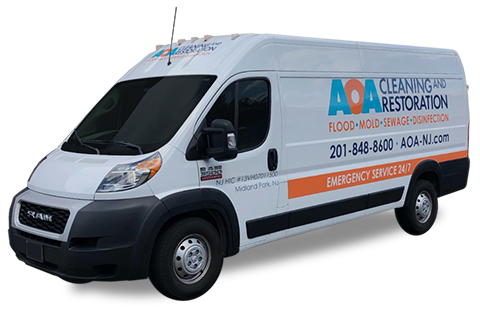Experiencing water damage can be a daunting and stressful experience. Whether it’s due to a burst pipe, natural disaster, or any other cause, it’s important to take immediate action to prevent further damage and ensure your safety.
What should you do immediately after water damage? Follow these crucial steps:
Key Takeaways:
- Act quickly to minimize further damage
- Ensure your safety before taking any action
- Document the damage for insurance purposes
- Remove standing water and dry the affected area
- Consider hiring professionals for restoration and repairs
Assess the Situation and Ensure Safety
Experiencing water damage in your home or office can be overwhelming, but it’s important to take a moment to assess the situation before taking action. Your safety should always be the top priority, so be sure to follow these safety measures:
- Check for any immediate hazards: Look for any electrical issues or structural damage, such as sagging ceilings or walls. If you see any hazards, make sure to turn off the main power supply to prevent electrical accidents.
- Wear protective gear: Water damage can lead to mold growth and other harmful bacteria. Wear gloves, boots, and other protective gear to avoid direct contact with contaminated water.
- Assess the extent of the water damage: Determine how much of the property has been affected by the water damage. This will help you devise the most effective plan of action for dealing with the aftermath.
By taking these steps, you can ensure the safety of yourself and others and minimize the potential for further damage. Once you have assessed the situation and ensured your safety, it’s time to move on to the next step: stopping the water source and shutting off utilities.
Stop the Water Source and Shut Off Utilities
After assessing the situation and ensuring your safety, the next step is to stop the water source and shut off utilities. If the water damage is caused by a burst pipe, overflowing appliance, or any other controllable source, you need to act quickly. Find the main water supply valve and shut it off immediately. This will prevent further water from entering your property and causing more damage.
In addition to shutting off the water, it’s crucial to turn off gas and electricity to prevent any potential risks. If you’re not sure how to do this, contact your utility provider for instructions.
It’s important to note that if you’re unable to locate the main water supply valve, you should contact a plumber or other professional to assist you with shutting off the water. Don’t waste any time in taking this step, as every second counts when it comes to preventing further water damage.
| Utility | Location of Shut-Off Valve |
|---|---|
| Water | Typically near the water meter or where the main water line enters your home |
| Gas | Outside your home, near the gas meter |
| Electricity | Either at the main service panel or at the individual circuit breaker |
Once you have stopped the water source and shut off utilities, you can move on to the next steps of addressing the water damage and restoring your property.
Document the Damage for Insurance Claims
After experiencing water damage, it’s important to document the extent of the damage for insurance purposes. Take photographs or videos of the affected areas and any damaged items. This documentation will be crucial when filing an insurance claim.
Make sure to capture the full scope of the water damage. Take wide shots of the affected rooms and close-ups of any damaged items. If possible, take pictures of the water source that caused the damage. This will provide additional context for your claim.
When documenting the damage, don’t forget to include any valuable items that have been affected. This can include electronic devices, jewelry, and other expensive possessions. Take close-up shots of any visible damage and note their original value.
| Item | Original Value | Damaged Value |
|---|---|---|
| Laptop | $1000 | $0 |
| Smartphone | $800 | $500 |
| Jewelry | $5000 | $2500 |
Keep in mind that your insurance company may request additional documentation or information, so be sure to keep all records related to the damage and repairs.
Remove Standing Water and Dry the Area
Once you have assessed the situation and ensured your safety, the next step is to remove any standing water in the affected area. The longer the water sits, the more damage it can cause to your property and belongings. Use a wet-dry vacuum or buckets to remove the water as soon as possible.
After removing the water, it’s crucial to dry the affected area completely. Open windows and doors to allow for proper ventilation and use fans and dehumidifiers to speed up the drying process. If necessary, consider hiring professionals with specialized equipment to ensure a thorough and effective drying process.
Keep in mind that simply drying the surface may not be enough. Water can seep into walls and floors, causing hidden damage and potential mold growth. It’s important to take the necessary steps to dry out any hidden pockets of moisture to prevent further damage and potential health hazards.
When drying the affected area, it’s important to take precautions to prevent any electrical accidents. Make sure to turn off the main power supply before entering a water-damaged area. Additionally, wear protective gear such as gloves, boots, and a mask to avoid contact with potentially harmful substances.
Salvage and Protect Belongings
After assessing the extent of the water damage and ensuring your safety, you must prioritize salvaging valuable and sentimental items such as documents, electronics, and heirlooms. These items may be more susceptible to water damage and need immediate attention.
Begin by carefully removing any wet items from the affected area. Use gloves and face masks to avoid potential health risks. If possible, spread out items in a dry location to help them air dry.
If any electronics or appliances have been affected, do not turn them on and unplug them immediately. These items need to be thoroughly dried and checked by a professional before being used again.
If your carpets or upholstery have been affected, consider professional cleaning or replacement. These items are difficult to fully dry, and if not properly cleaned, can pose health risks due to mold and bacteria.
| Tip: | Place important documents in a plastic bag or container to protect them from further damage and keep them organized. |
|---|---|
It’s essential to remove any items that are beyond repair and may pose health risks. Dispose of them properly and ensure they are not in contact with any other valuables.
Remember, the longer items are exposed to water, the more damage they may incur. Act quickly and prioritize your most valuable items for the best chance of salvaging them successfully.
Contact Professionals for Restoration and Repairs
While you may be able to handle some water damage cleanup on your own, it’s often best to enlist the help of professionals for restoration and repairs. Water damage can cause long-term issues such as mold growth and structural damage, so it’s important to address the issue properly.
When searching for professionals, make sure to choose a certified and insured company with experience in water damage restoration. Obtaining multiple quotes can help you find the best deal for your budget.
| Benefits of Hiring Professionals | DIY Risks |
|---|---|
| Proper drying and sanitizing techniques | Inadequate drying leading to mold growth |
| Equipment for comprehensive cleanup | Lack of necessary equipment |
| Thorough water damage assessment | Inability to fully assess damage |
By contacting professionals for restoration and repairs, you can ensure that your property is thoroughly cleaned and restored to its pre-damage condition.
Remember, water damage can cause serious issues if not properly addressed. Contacting professionals for restoration and repairs can give you peace of mind knowing that your property is in good hands.
Conclusion: Addressing the Aftermath of Water Damage
Experiencing water damage can be a stressful and overwhelming situation. However, by taking immediate action and following the steps outlined in this article, you can effectively address the aftermath of water damage and begin the process of restoration and repair.
Remember to prioritize your safety by assessing the situation and turning off utilities if necessary. Document the damage for insurance purposes and salvage any valuable items that may have been affected.
After the initial steps have been taken, be sure to remove standing water and dry the affected area to prevent further damage and the growth of mold and mildew.
If the water damage is severe, consider hiring professionals for restoration and repairs. Obtain multiple quotes and ensure they are certified and insured.
In conclusion, taking immediate action and following the steps outlined in this article can help alleviate the stress and minimize the damage caused by water damage.
FAQ
What should I do immediately after experiencing water damage?
The immediate steps to take after water damage are to assess the situation and ensure safety, stop the water source and shut off utilities, document the damage for insurance claims, remove standing water and dry the area, salvage and protect belongings, and contact professionals for restoration and repairs.
How do I assess the situation and ensure safety after water damage?
Before taking any action, assess the extent of the water damage and check for any immediate hazards such as electrical issues or structural damage. If necessary, turn off the main power supply to prevent electrical accidents.
How do I stop the water source and shut off utilities?
If the water damage is caused by a burst pipe or overflowing appliance, locate the main water supply valve and shut it off. Additionally, turn off gas and electricity to prevent further damage and potential risks.
Should I document the damage for insurance claims?
Yes, it is important to take photographs or videos of the affected areas and damaged items. This documentation will be crucial when filing an insurance claim. Capture the extent of the water damage and any valuable items that have been affected.
How do I remove standing water and dry the area?
Use a wet-dry vacuum or buckets to remove standing water as soon as possible. Open windows and doors to allow for proper ventilation. Utilize fans, dehumidifiers, and, if necessary, professional equipment to dry out the affected area completely.
What should I do to salvage and protect belongings?
Prioritize salvaging valuable and sentimental items such as documents, electronics, and heirlooms. Place them in a safe, dry location to prevent further damage. Dispose of any items that are beyond repair and may pose health risks.
When should I contact professionals for restoration and repairs?
Depending on the severity of the water damage, it may be necessary to hire professionals specializing in water damage restoration. They have the expertise and equipment to properly dry, sanitize, and restore your property. Obtain multiple quotes and ensure they are certified and insured.




















